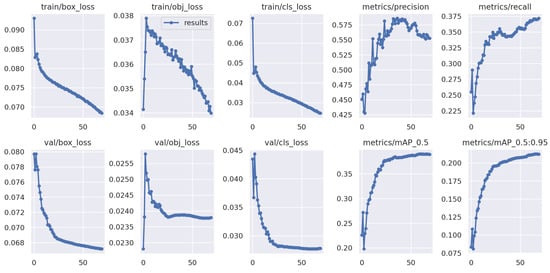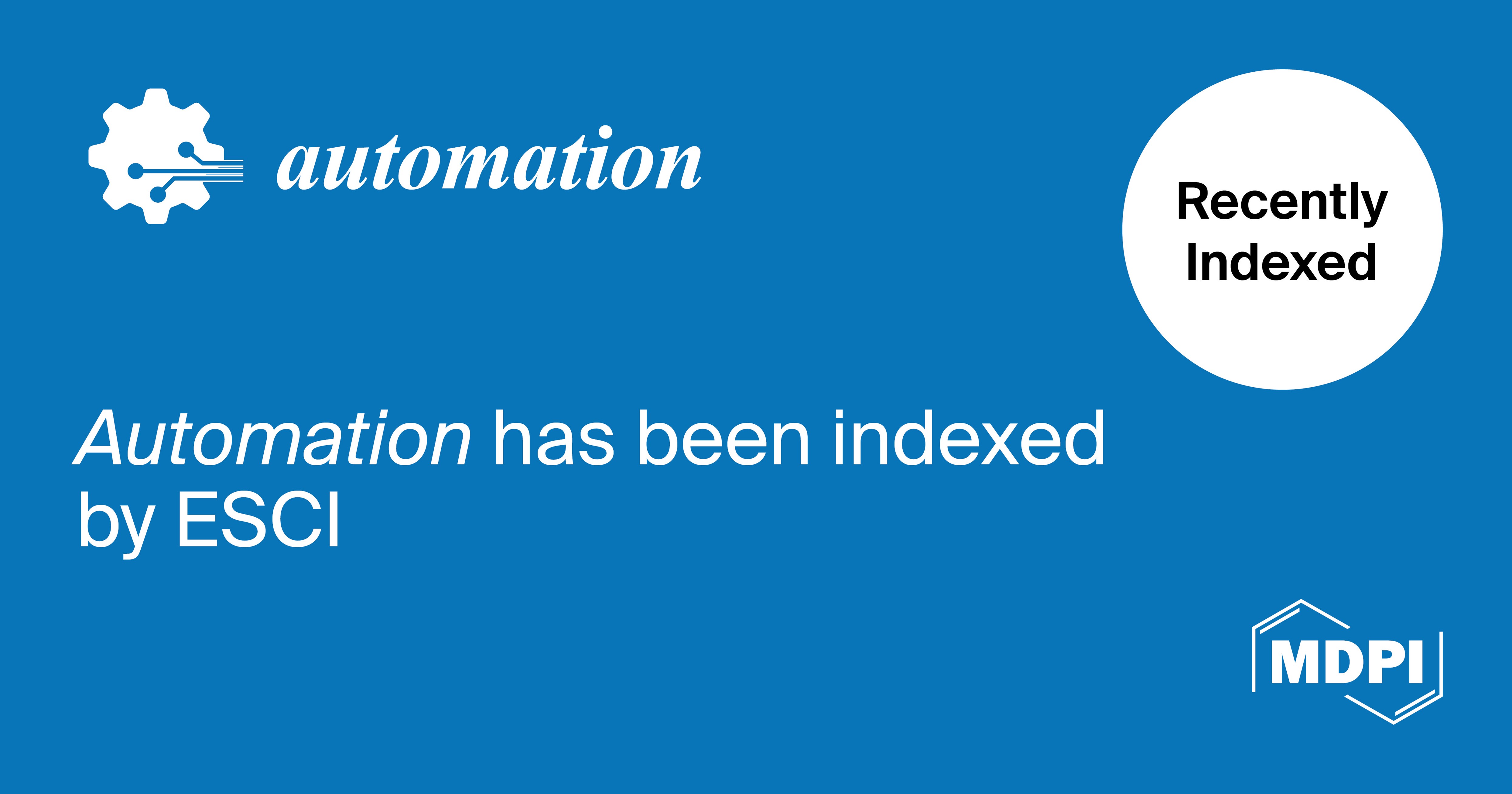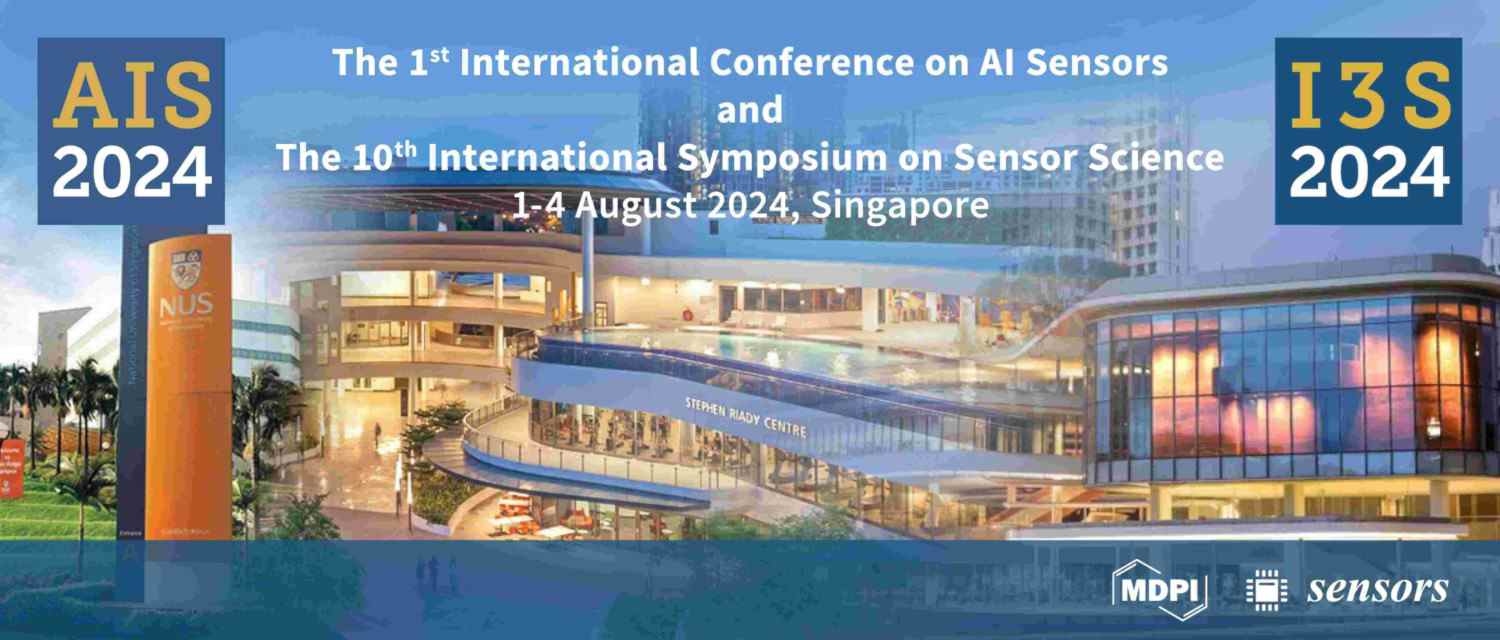Journal Description
Automation
Automation
is an international, peer-reviewed, open access journal on automation and control systems published quarterly online by MDPI.
- Open Access— free for readers, with article processing charges (APC) paid by authors or their institutions.
- High Visibility: indexed within ESCI (Web of Science), Scopus, EBSCO, and other databases.
- Reliable Service: rigorous peer review and professional production.
- Rapid Publication: manuscripts are peer-reviewed and a first decision is provided to authors approximately 26.3 days after submission; acceptance to publication is undertaken in 4.9 days (median values for papers published in this journal in the second half of 2023).
- Recognition of Reviewers: APC discount vouchers, optional signed peer review, and reviewer names published annually in the journal.
- Companion journal: Sensors.
Latest Articles
Vision-Based Object Manipulation for Activities of Daily Living Assistance Using Assistive Robot
Automation 2024, 5(2), 68-89; https://doi.org/10.3390/automation5020006 - 15 Apr 2024
Abstract
The increasing prevalence of upper and lower extremity (ULE) functional deficiencies presents a significant challenge, as it restricts individuals’ ability to perform daily tasks independently. Robotic devices are emerging as assistive devices to assist individuals with limited ULE functionalities in activities of daily
[...] Read more.
The increasing prevalence of upper and lower extremity (ULE) functional deficiencies presents a significant challenge, as it restricts individuals’ ability to perform daily tasks independently. Robotic devices are emerging as assistive devices to assist individuals with limited ULE functionalities in activities of daily living (ADLs). While assistive manipulators are available, manual control through traditional methods like joysticks can be cumbersome, particularly for individuals with severe hand impairments and vision limitations. Therefore, autonomous/semi-autonomous control of a robotic assistive device to perform any ADL task is open to research. This study addresses the necessity of fostering independence in ADLs by proposing a creative approach. We present a vision-based control system for a six-degrees-of-freedom (DoF) robotic manipulator designed for semi-autonomous “pick-and-place” tasks, one of the most common activities among ADLs. Our approach involves selecting and training a deep-learning-based object detection model with a dataset of 47 ADL objects, forming the base for a 3D ADL object localization algorithm. The proposed vision-based control system integrates this localization technique to identify and manipulate ADL objects (e.g., apples, oranges, capsicums, and cups) in real time, returning them to specific locations to complete the “pick-and-place” task. Experimental validation involving an xArm6 (six DoF) robot from UFACTORY in diverse settings demonstrates the system’s adaptability and effectiveness, achieving an overall 72.9% success rate in detecting, localizing, and executing ADL tasks. This research contributes to the growing field of autonomous assistive devices, enhancing independence for individuals with functional impairments.
Full article
(This article belongs to the Collection Smart Robotics for Automation)
►
Show Figures
Open AccessArticle
Robotic Disassembly Platform for Disassembly of a Plug-In Hybrid Electric Vehicle Battery: A Case Study
by
Mo Qu, D. T. Pham, Faraj Altumi, Adeyemisi Gbadebo, Natalia Hartono, Kaiwen Jiang, Mairi Kerin, Feiying Lan, Marcel Micheli, Shuihao Xu and Yongjing Wang
Automation 2024, 5(2), 50-67; https://doi.org/10.3390/automation5020005 - 01 Apr 2024
Abstract
Efficient processing of end-of-life lithium-ion batteries in electric vehicles is an important and pressing challenge in a circular economy. Regardless of whether the processing strategy is recycling, repurposing, or remanufacturing, the first processing step will usually involve disassembly. As battery disassembly is a
[...] Read more.
Efficient processing of end-of-life lithium-ion batteries in electric vehicles is an important and pressing challenge in a circular economy. Regardless of whether the processing strategy is recycling, repurposing, or remanufacturing, the first processing step will usually involve disassembly. As battery disassembly is a dangerous task, efforts have been made to robotise it. In this paper, a robotic disassembly platform using four industrial robots is proposed to automate the non-destructive disassembly of a plug-in hybrid electric vehicle battery pack into modules. This work was conducted as a case study to demonstrate the concept of the autonomous disassembly of an electric vehicle battery pack. A two-step object localisation method based on visual information is used to overcome positional uncertainties from different sources and is validated by experiments. Also, the unscrewing system is highlighted, and its functions, such as handling untightened fasteners, loosening jammed screws, and changing the nutrunner adapters with square drives, are detailed. Furthermore, the time required for each operation is compared with that taken by human operators. Finally, the limitations of the platform are reported, and future research directions are suggested.
Full article
(This article belongs to the Special Issue Smart Remanufacturing)
►▼
Show Figures
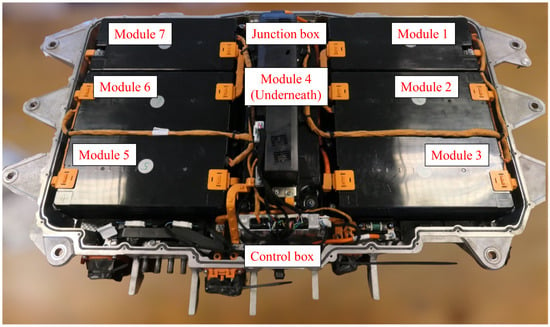
Figure 1
Open AccessCorrection
Correction: Berceanu, C.; Pătrașcu, M. Engineering Emergence: A Survey on Control in the World of Complex Networks. Automation 2022, 3, 176–196
by
Cristian Berceanu and Monica Pătrașcu
Automation 2024, 5(2), 49; https://doi.org/10.3390/automation5020004 - 26 Mar 2024
Abstract
In the original publication [...]
Full article
Open AccessArticle
Automated Detection of Train Drivers’ Head Movements: A Proof-of-Concept Study
by
David Schackmann and Esther Bosch
Automation 2024, 5(1), 35-48; https://doi.org/10.3390/automation5010003 - 18 Mar 2024
Abstract
With increasing automation in the rail sector, the train driver’s task changes from full control to a supervisory position. This bears the risk of monotony and subsequent changes in visual attention, possibly for the worse. Similar to concepts in car driving, one solution
[...] Read more.
With increasing automation in the rail sector, the train driver’s task changes from full control to a supervisory position. This bears the risk of monotony and subsequent changes in visual attention, possibly for the worse. Similar to concepts in car driving, one solution for this could be driver state monitoring with triggered interventions in case of declining task attention. Previous research on train drivers’ visual attention has used eye tracking. In contrast, head tracking is easier to realize within the train driver cabin. This study set out to test whether head tracking is a feasible alternative to eye tracking and can provide similar findings. Based on previous eye-tracking research, we compared differences in head movements in automated vs. manual driving, and for different levels of driving speed and driving experience. We conducted a study with 25 active train drivers in a high-fidelity train simulator. Statistical analyses revealed no significant difference in the vertical head movements between automation levels. There was a significant difference in the horizontal head movements, with train drivers looking more to the right for manual driving. We found no significant influence of driving speed and experience on head movements. Safety implications and the feasibility of head tracking as an alternative to eye tracking are discussed.
Full article
(This article belongs to the Topic Vehicle Safety and Automated Driving)
►▼
Show Figures
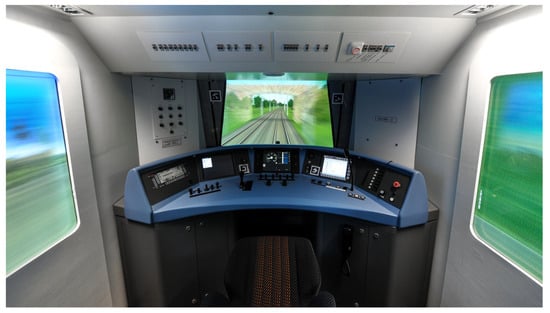
Figure 1
Open AccessArticle
Neural Network-Based Classifier for Collision Classification and Identification for a 3-DOF Industrial Robot
by
Khaled H. Mahmoud, G. T. Abdel-Jaber and Abdel-Nasser Sharkawy
Automation 2024, 5(1), 13-34; https://doi.org/10.3390/automation5010002 - 14 Mar 2024
Abstract
In this paper, the aim is to classify torque signals that are received from a 3-DOF manipulator using a pattern recognition neural network (PR-NN). The output signals of the proposed PR-NN classifier model are classified into four indicators. The first predicts that no
[...] Read more.
In this paper, the aim is to classify torque signals that are received from a 3-DOF manipulator using a pattern recognition neural network (PR-NN). The output signals of the proposed PR-NN classifier model are classified into four indicators. The first predicts that no collisions occur. The other three indicators predict collisions on the three links of the manipulator. The input data to train the PR-NN model are the values of torque exerted by the joints. The output of the model predicts and identifies the link on which the collision occurs. In our previous work, the position data for a 3-DOF robot were used to estimate the external collision torques exerted by the joints when applying collisions on each link, based on a recurrent neural network (RNN). The estimated external torques were used to design the current PR-NN model. In this work, the PR-NN model, while training, could successfully classify 56,592 samples out of 56,619 samples. Thus, the model achieved overall effectiveness (accuracy) in classifying collisions on the robot of 99.95%, which is almost 100%. The sensitivity of the model in detecting collisions on the links “Link 1, Link 2, and Link 3” was 97.9%, 99.7%, and 99.9%, respectively. The overall effectiveness of the trained model is presented and compared with other previous entries from the literature.
Full article
(This article belongs to the Collection Smart Robotics for Automation)
►▼
Show Figures
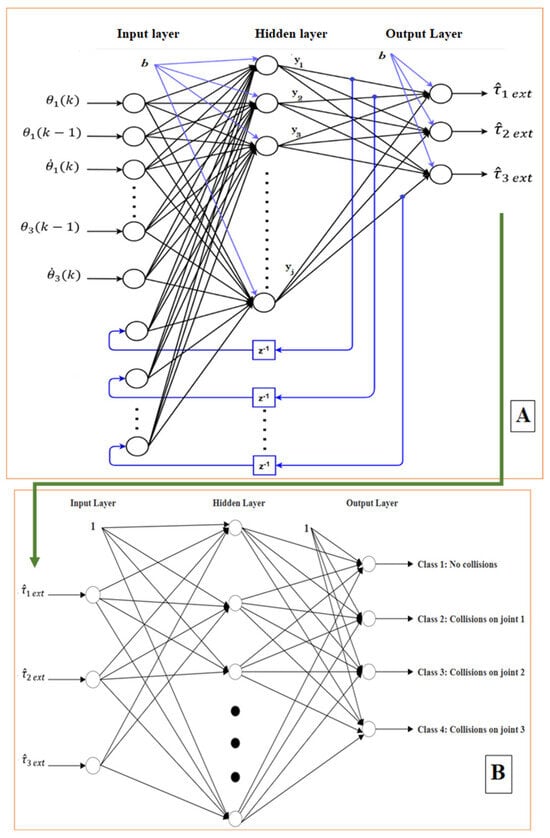
Figure 1
Open AccessArticle
Virtual Commissioning of Linked Cells Using Digital Models in an Industrial Metaverse
by
Marco Ullrich, Rashik Thalappully, Frieder Heieck and Bernd Lüdemann-Ravit
Automation 2024, 5(1), 1-12; https://doi.org/10.3390/automation5010001 - 02 Feb 2024
Abstract
Various software environments have been developed in the past to create digital twins of single cells or a digital twin of a factory. Each environment has its own strengths and weaknesses and has been designed with a specific focus. The environments that are
[...] Read more.
Various software environments have been developed in the past to create digital twins of single cells or a digital twin of a factory. Each environment has its own strengths and weaknesses and has been designed with a specific focus. The environments that are able to holistically simulate complete factories are limited in terms of the modelling details required for the analysis of single manufacturing cells (e.g., manufacturer-independence of the individual digital twins) and their ability for virtual commissioning. This paper presents three options for realising a virtual commissioning of linked cells using a 3D integration platform with NVIDIA Omniverse, consisting of two different digital models fused into a combined model, also representing material flow. First, with a source/sink solution and unidirectional connector controlled by OPC UA; secondly, with a bidirectional connector, developed in the course of this elaboration, and an extension of the 3D integration platform controlled by Apache Kafka; thirdly, with a bidirectional connector and using only an extension of the 3D integration platform. The research demonstrates that virtually commissioning multiple linked digital twins from different manufacturers in a 3D platform with material flow makes a significant contribution to the industrial metaverse.
Full article
(This article belongs to the Topic Smart Manufacturing and Industry 5.0)
►▼
Show Figures
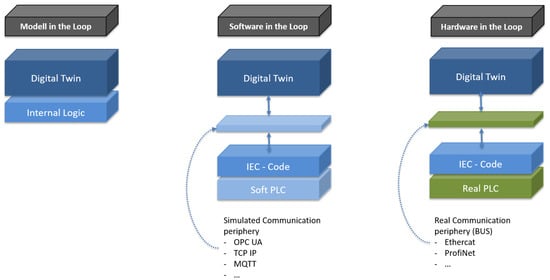
Figure 1
Open AccessArticle
A Simplified One-Parallel-Element Automatic Impedance-Matching Network Applied to Electromagnetic Acoustic Transducers Driving
by
João Pedro T. Andrade, Pedro Leon F. C. Bazan, Vivian S. Medeiros and Alan C. Kubrusly
Automation 2023, 4(4), 378-395; https://doi.org/10.3390/automation4040022 - 01 Dec 2023
Abstract
Ultrasonic waves generated and received by electromagnetic acoustic transducers (EMATs) are advantageous in non-destructive testing, mainly due to the ability to operate without physical contact with the medium under test. Nevertheless, they present a main drawback of less efficiency, which leads to a
[...] Read more.
Ultrasonic waves generated and received by electromagnetic acoustic transducers (EMATs) are advantageous in non-destructive testing, mainly due to the ability to operate without physical contact with the medium under test. Nevertheless, they present a main drawback of less efficiency, which leads to a lower signal-to-noise ratio. To overcome this, the L-network impedance-matching network is often used in order to ensure maximum power transfer to the EMAT from the excitation electronics. There is a wide range of factors that affect an EMAT’s impedance, apart from the transducer itself; namely, the properties of the specimen material, temperature, and frequency. Therefore, to ensure optimal power transfer, the matching network’s configuration needs to be fine-tuned often. Therefore, the automation of the laborious process of manually adjusting the network is of great benefit to the use of EMAT transducers. In this work, a simplified one-parallel-element automatic matching network is proposed and its theoretical optimal value is derived. Next, an automatic matching network was designed and fabricated. Experiments were performed with two different EMATs at several frequencies obtaining good agreement with theoretical predictions. The automatic system was able to determine the best configuration for the one-element matching network and provided up to 5.6 dB gain, similar to a standard manual solution and considerably faster.
Full article
(This article belongs to the Special Issue Model Predictive Control: Advances in Sensor Technologies and Applications)
►▼
Show Figures
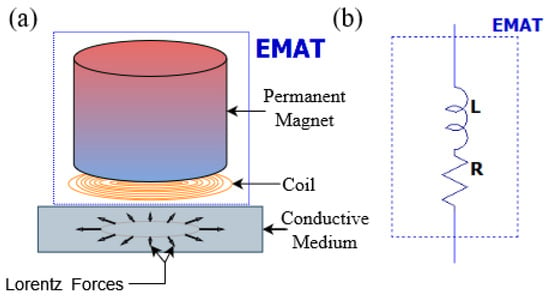
Figure 1
Open AccessArticle
Optimisation of Product Recovery Options in End-of-Life Product Disassembly by Robots
by
Natalia Hartono, F. Javier Ramírez and Duc Truong Pham
Automation 2023, 4(4), 359-377; https://doi.org/10.3390/automation4040021 - 29 Nov 2023
Abstract
In a circular economy, strategies for product recovery, such as reuse, recycling, and remanufacturing, play an important role at the end of a product’s life. A sustainability model was developed to solve the problem of sequence-dependent robotic disassembly line balancing. This research aimed
[...] Read more.
In a circular economy, strategies for product recovery, such as reuse, recycling, and remanufacturing, play an important role at the end of a product’s life. A sustainability model was developed to solve the problem of sequence-dependent robotic disassembly line balancing. This research aimed to assess the viability of the model, which was optimised using the Multi-Objective Bees Algorithm in a robotic disassembly setting. Two industrial gear pumps were used as case studies. Four objectives (maximising profit, energy savings, emissions reductions and minimising line imbalance) were set. Several product recovery scenarios were developed to find the best recovery plans for each component. An efficient metaheuristic, the Bees Algorithm, was used to find the best solution. The robotic disassembly plans were generated and assigned to robotic workstations simultaneously. Using the proposed sustainability model on end-of-life industrial gear pumps shows the applicability of the model to real-world problems. The Multi-Objective Bees Algorithm was able to find the best scenario for product recovery by assigning each component to recycling, reuse, remanufacturing, or disposal. The performance of the algorithm is consistent, producing a similar performance for all sustainable strategies. This study addresses issues that arise with product recovery options for end-of-life products and provides optimal solutions through case studies.
Full article
(This article belongs to the Collection Smart Robotics for Automation)
►▼
Show Figures
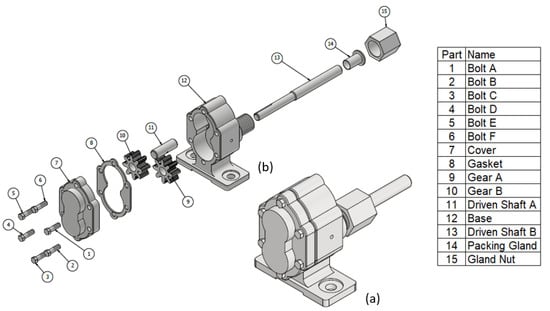
Figure 1
Open AccessCommunication
Implementation of Digital Twin and Real Production System to Address Actual and Future Challenges in Assembly Technology
by
Lukas Christ, Elías Milloch, Marius Boshoff, Alfred Hypki and Bernd Kuhlenkötter
Automation 2023, 4(4), 345-358; https://doi.org/10.3390/automation4040020 - 29 Nov 2023
Abstract
►▼
Show Figures
Increasing volatility in manufacturing and rising sustainability requirements demand more efficient processes in production, especially in employee qualification and engineering during development and on-site adjustments before and after the start of production. One possible solution is using digital twins for virtual commissioning, which
[...] Read more.
Increasing volatility in manufacturing and rising sustainability requirements demand more efficient processes in production, especially in employee qualification and engineering during development and on-site adjustments before and after the start of production. One possible solution is using digital twins for virtual commissioning, which can speed up engineering processes, qualify employees, and save valuable resources. To solve these challenges, it is necessary to identify promising approaches for using the digital twin and virtual commissioning. Furthermore, creating an environment where these approaches can be optimally explored is essential. This paper presents promising research approaches and demonstrates the development of an assembly process and a production system with a digital twin designed to explore these aspects. The presented system is an interlinked production system for assembling an actual industrial product. It includes different levels of human–robot interaction and automation, which can be implemented virtually in the digital twin.
Full article
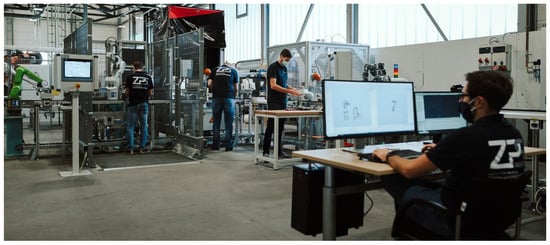
Figure 1
Open AccessArticle
Application of Task-Aligned Model Based on Defect Detection
by
Ming-Hung Hung, Chao-Hsun Ku and Kai-Ying Chen
Automation 2023, 4(4), 327-344; https://doi.org/10.3390/automation4040019 - 27 Oct 2023
Abstract
In recent years, with the rise of the automation wave, reducing manual judgment, especially in defect detection in factories, has become crucial. The automation of image recognition has emerged as a significant challenge. However, the problem of how to effectively improve the classification
[...] Read more.
In recent years, with the rise of the automation wave, reducing manual judgment, especially in defect detection in factories, has become crucial. The automation of image recognition has emerged as a significant challenge. However, the problem of how to effectively improve the classification of defect detection and the accuracy of the mean average precision (mAP) is a continuous process of improvement and has evolved from the original visual inspection of defects to the present deep learning detection system. This paper presents an application of deep learning, and the task-aligned approach is firstly used on metal defects, and the anchor and bounding box of objects and categories are continuously optimized by mutual correction. We used the task-aligned one-stage object detection (TOOD) model, then improved and optimized it, followed by deformable ConvNets v2 (DCNv2) to adjust the deformable convolution, and finally used soft efficient non-maximum suppression (Soft-NMS) to optimize intersection over union (IoU) and adjust the IoU threshold and many other experiments. In the Northeastern University surface defect detection dataset (NEU-DET) for surface defect detection, mAP increased from 75.4% to 77.9%, a 2.5% increase in mAP, and mAP was also improved compared to existing advanced models, which has potential for future use.
Full article
(This article belongs to the Topic Smart Manufacturing and Industry 5.0)
►▼
Show Figures
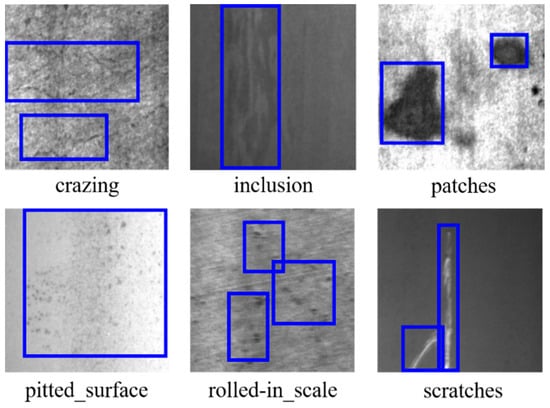
Figure 1
Open AccessArticle
Autonomous Navigation and Crop Row Detection in Vineyards Using Machine Vision with 2D Camera
by
Enrico Mendez, Javier Piña Camacho, Jesús Arturo Escobedo Cabello and Alfonso Gómez-Espinosa
Automation 2023, 4(4), 309-326; https://doi.org/10.3390/automation4040018 - 24 Sep 2023
Abstract
►▼
Show Figures
In order to improve agriculture productivity, autonomous navigation algorithms are being developed so that robots can navigate along agricultural environments to automatize tasks that are currently performed by hand. This work uses machine vision techniques such as the Otsu’s method, blob detection, and
[...] Read more.
In order to improve agriculture productivity, autonomous navigation algorithms are being developed so that robots can navigate along agricultural environments to automatize tasks that are currently performed by hand. This work uses machine vision techniques such as the Otsu’s method, blob detection, and pixel counting to detect the center of the row. Additionally, a commutable control is implemented to autonomously navigate a vineyard. Experimental trials were conducted in an actual vineyard to validate the algorithm. In these trials show that the algorithm can successfully guide the robot through the row without any collisions. This algorithm offers a computationally efficient solution for vineyard row navigation, employing a 2D camera and the Otsu’s thresholding technique to ensure collision-free operation.
Full article
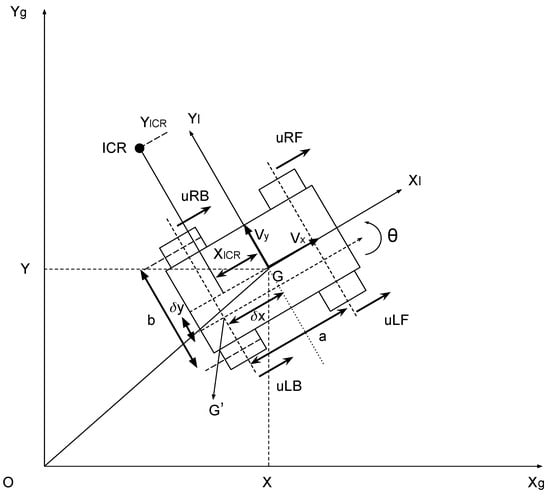
Figure 1
Open AccessArticle
Multi-Criteria Design of Electric Transit Bus Based on Wireless Charging Infrastructure: A Case Study of Real Road Map in Wakefield
by
Arman Fathollahi, Meysam Gheisarnejad, Jalil Boudjadar, Sayed Yaser Derakhshandeh and Mohammad Hassan Khooban
Automation 2023, 4(3), 291-308; https://doi.org/10.3390/automation4030017 - 15 Sep 2023
Abstract
►▼
Show Figures
In this paper, a new design strategy is developed for the Wireless Charging Electric Transit Bus (WCETB). The technology is innovative in that the battery in the bus is charged while it is moving over the charging infrastructure. In particular, an improved version
[...] Read more.
In this paper, a new design strategy is developed for the Wireless Charging Electric Transit Bus (WCETB). The technology is innovative in that the battery in the bus is charged while it is moving over the charging infrastructure. In particular, an improved version of the Whale Optimization Algorithm (IWOA) is adopted for the WCETB system in the road map of Wakefield City, located in the United Kingdom. The main challenge in the WCETB is to select the power transmitter and battery size efficiently from an economical point of view. For this purpose, both factors are considered in the objective function to achieve the benefits of WCETBs from an energy perspective. Two analytical economic design optimization models are developed in this work. The first model is the real- environment model, which considers a WCETB system operating under typical traffic conditions characterized by vehicle interactions and inherent uncertainties. In this scenario, vehicle speeds vary with time, and specific traffic routes may encounter congestion. The second model concentrates on a WCETB system operating in a traffic-free environment with minimal vehicle interactions and uncertainties. The IWOA is implemented for the WCETB to operate in the real environment. Under traffic-free environment conditions, we utilize mathematical procedures and General Algebraic Modeling System (GAMS) software to solve the optimization problem. This approach not only allows us to comprehensively analyze the WCETB system’s behavior but also examine the interactions among different components of the objective function and constraints. Finally, a comprehensive numerical analysis under various conditions, including changes in the number of buses and increases in the length of routes, is conducted.
Full article
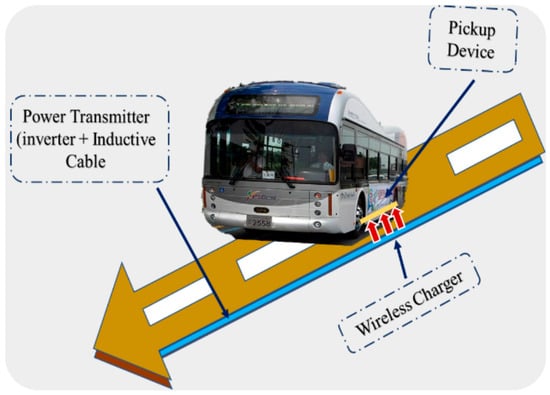
Figure 1
Open AccessArticle
Task Location to Improve Human–Robot Cooperation: A Condition Number-Based Approach
by
Abdel-Nasser Sharkawy
Automation 2023, 4(3), 263-290; https://doi.org/10.3390/automation4030016 - 06 Sep 2023
Abstract
This paper proposes and implements an approach to evaluate human–robot cooperation aimed at achieving high performance. Both the human arm and the manipulator are modeled as a closed kinematic chain. The proposed task performance criterion is based on the condition number of this
[...] Read more.
This paper proposes and implements an approach to evaluate human–robot cooperation aimed at achieving high performance. Both the human arm and the manipulator are modeled as a closed kinematic chain. The proposed task performance criterion is based on the condition number of this closed kinematic chain. The robot end-effector is guided by the human operator via an admittance controller to complete a straight-line segment motion, which is the desired task. The best location of the selected task is determined by maximizing the minimum of the condition number along the path. The performance of the proposed approach is evaluated using a criterion related to ergonomics. The experiments are executed with several subjects using a KUKA LWR robot to repeat the specified motion to evaluate the introduced approach. A comparison is presented between the current proposed approach and our previously implemented approach where the task performance criterion was based on the manipulability index of the closed kinematic chain. The results reveal that the condition number-based approach improves the human–robot cooperation in terms of the achieved accuracy, stability, and human comfort, but at the expense of task speed and completion time. On the other hand, the manipulability-index-based approach improves the human–robot cooperation in terms of task speed and human comfort, but at the cost of the achieved accuracy.
Full article
(This article belongs to the Collection Smart Robotics for Automation)
►▼
Show Figures

Figure 1
Open AccessArticle
The Design of a Reaction Flywheel Speed Control System Based on ADRC
by
Jiachen Song, Jianguo Guo, Changtao Qin and Wanliang Zhao
Automation 2023, 4(3), 246-262; https://doi.org/10.3390/automation4030015 - 30 Aug 2023
Abstract
►▼
Show Figures
The reaction flywheel is a crucial operational component within a satellite’s attitude control system. Enhancing the performance of the reaction flywheel speed control system holds significant importance for satellite attitude control. In this paper, an active disturbance rejection control (ADRC) approach is introduced
[...] Read more.
The reaction flywheel is a crucial operational component within a satellite’s attitude control system. Enhancing the performance of the reaction flywheel speed control system holds significant importance for satellite attitude control. In this paper, an active disturbance rejection control (ADRC) approach is introduced to mitigate the impact of uncertain disturbances on reaction flywheel speed control precision. The reaction flywheel speed control system is designed as an ADRC controller due to the current challenge of measuring unknown disturbances accurately in the reaction flywheel system. To derive the rotor’s speed observation value and the estimated total disturbances value, the sampled data of the reaction flywheel rotor position and torque control signal are fed into the extended state observer. The estimated total disturbances value is compensated on feedforward control, which could mitigate significantly the effects of various nonlinear disturbances. The paper initially establishes the rationale behind the reaction flywheel ADRC controller through theoretical analysis, followed by analysis of the differences of performance of reaction flywheel control by the ADRC controller and the PID controller in MATLAB/SIMULINK. Simulation results demonstrate the evident advantages of the ADRC controller over the PID controller in terms of speed command tracking capability and disturbances suppression ability. Subsequently, the ADRC controller program and the PID controller program are implemented on the reaction flywheel control circuit, and experiments are conducted to contrast speed command tracking and disturbance suppression. Importantly, the experimental outcomes align with the simulation results.
Full article
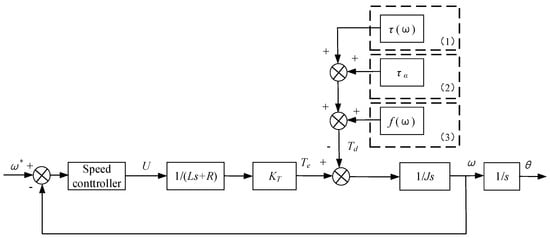
Figure 1
Open AccessArticle
Can Artificial Neural Networks Be Used to Predict Bitcoin Data?
by
Terje Solsvik Kristensen and Asgeir H. Sognefest
Automation 2023, 4(3), 232-245; https://doi.org/10.3390/automation4030014 - 25 Aug 2023
Abstract
Financial markets are complex, evolving dynamic systems. Due to their irregularity, financial time series forecasting is regarded as a rather challenging task. In recent years, artificial neural network applications in finance for such tasks as pattern recognition, classification, and time series forecasting have
[...] Read more.
Financial markets are complex, evolving dynamic systems. Due to their irregularity, financial time series forecasting is regarded as a rather challenging task. In recent years, artificial neural network applications in finance for such tasks as pattern recognition, classification, and time series forecasting have dramatically increased. The objective of this paper is to present this versatile framework and attempt to use it to predict the stock return series of four public-listed companies on the New York Stock Exchange. Our findings coincide with those of Burton Malkiel in his book, A Random Walk Down Wall Street; no conclusive evidence is found that our proposed models can predict the stock return series better than that of a random walk.
Full article
(This article belongs to the Special Issue Networked Predictive Control for Complex Systems)
►▼
Show Figures
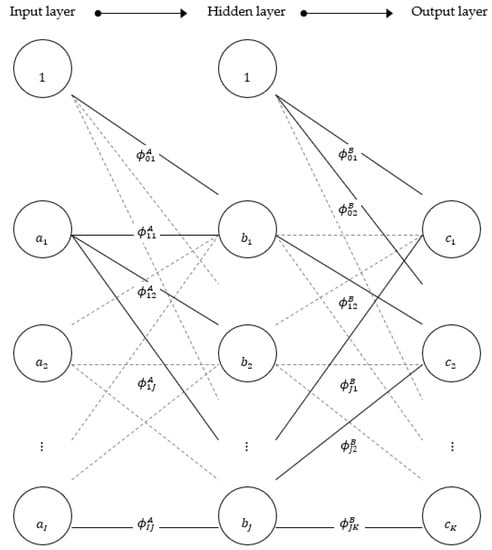
Figure 1
Open AccessArticle
Deep Dyna-Q for Rapid Learning and Improved Formation Achievement in Cooperative Transportation
by
Almira Budiyanto and Nobutomo Matsunaga
Automation 2023, 4(3), 210-231; https://doi.org/10.3390/automation4030013 - 10 Jul 2023
Cited by 2
Abstract
Nowadays, academic research, disaster mitigation, industry, and transportation apply the cooperative multi-agent concept. A cooperative multi-agent system is a multi-agent system that works together to solve problems or maximise utility. The essential marks of formation control are how the multiple agents can reach
[...] Read more.
Nowadays, academic research, disaster mitigation, industry, and transportation apply the cooperative multi-agent concept. A cooperative multi-agent system is a multi-agent system that works together to solve problems or maximise utility. The essential marks of formation control are how the multiple agents can reach the desired point while maintaining their position in the formation based on the dynamic conditions and environment. A cooperative multi-agent system closely relates to the formation change issue. It is necessary to change the arrangement of multiple agents according to the environmental conditions, such as when avoiding obstacles, applying different sizes and shapes of tracks, and moving different sizes and shapes of transport objects. Reinforcement learning is a good method to apply in a formation change environment. On the other hand, the complex formation control process requires a long learning time. This paper proposed using the Deep Dyna-Q algorithm to speed up the learning process while improving the formation achievement rate by tuning the parameters of the Deep Dyna-Q algorithm. Even though the Deep Dyna-Q algorithm has been used in many applications, it has not been applied in an actual experiment. The contribution of this paper is the application of the Deep Dyna-Q algorithm in formation control in both simulations and actual experiments. This study successfully implements the proposed method and investigates formation control in simulations and actual experiments. In the actual experiments, the Nexus robot with a robot operating system (ROS) was used. To confirm the communication between the PC and robots, camera processing, and motor controller, the velocities from the simulation were directly given to the robots. The simulations could give the same goal points as the actual experiments, so the simulation results approach the actual experimental results. The discount rate and learning rate values affected the formation change achievement rate, collision number among agents, and collisions between agents and transport objects. For learning rate comparison, DDQ (0.01) consistently outperformed DQN. DQN obtained the maximum −170 reward in about 130,000 episodes, while DDQ (0.01) could achieve this value in 58,000 episodes and achieved a maximum −160 reward. The application of an MEC (model error compensator) in the actual experiment successfully reduced the error movement of the robots so that the robots could produce the formation change appropriately.
Full article
(This article belongs to the Topic Target Tracking, Guidance, and Navigation for Autonomous Systems)
►▼
Show Figures
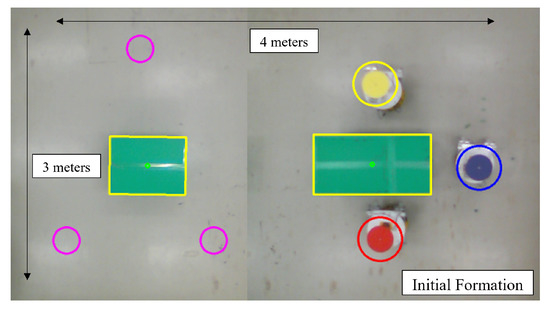
Figure 1
Open AccessArticle
Automation Radiomics in Predicting Radiation Pneumonitis (RP)
by
Sotiris Raptis, Vasiliki Softa, Georgios Angelidis, Christos Ilioudis and Kiki Theodorou
Automation 2023, 4(3), 191-209; https://doi.org/10.3390/automation4030012 - 06 Jul 2023
Cited by 1
Abstract
►▼
Show Figures
Radiomics has shown great promise in predicting various diseases. Researchers have previously attempted to include radiomics in their automated detection, diagnosis, and segmentation algorithms, taking these steps based on the promising outcomes of radiomics-based studies. As a result of the increased attention given
[...] Read more.
Radiomics has shown great promise in predicting various diseases. Researchers have previously attempted to include radiomics in their automated detection, diagnosis, and segmentation algorithms, taking these steps based on the promising outcomes of radiomics-based studies. As a result of the increased attention given to this topic, numerous institutions have developed their own radiomics software. These packages, on the other hand, have been utilized interchangeably without regard for their fundamental differences. The primary purpose of this study was to explore benefits of predictive model performance for radiation pneumonitis (RP), which is the most frequent side effect of chest radiotherapy, and through this work, we developed a radiomics model based on deep learning that intends to increase RP prediction performance by combining more data points and digging deeper into these data. In order to evaluate the most popular machine learning models, radiographic characteristics were used, and we recorded the most important of them. The high dimensionality of radiomic datasets is a major issue. The method proposed for use in data problems is the synthetic minority oversampling technique, which we used in order to create a balanced dataset by leveraging suitable hardware and open-source software. The present study assessed the efficacy of various machine learning models, including logistic regression (LR), support vector machine (SVM), random forest (RF), and deep neural network (DNN), in predicting radiation pneumonitis by utilizing specific radiomics features. The findings of the study indicate that the four models displayed satisfactory efficacy in forecasting radiation pneumonitis. The DNN model demonstrated the highest area under the receiver operating curve (AUC-ROC) value, which was 0.87, suggesting its superior predictive capacity among the models considered. The AUC-ROC values for the random forest, SVM, and logistic regression models were 0.85, 0.83, and 0.81, respectively.
Full article
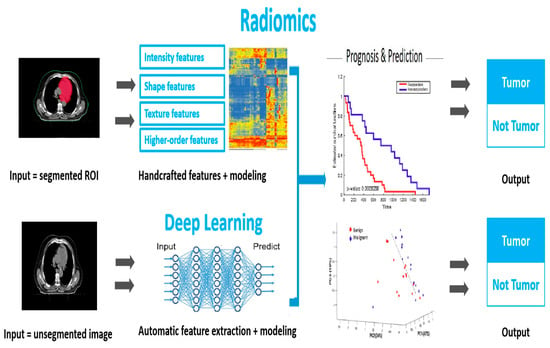
Figure 1
Open AccessArticle
Trajectory Control in Discrete-Time Nonlinear Coupling Dynamics of a Soft Exo-Digit and a Human Finger Using Input–Output Feedback Linearization
by
Umme Kawsar Alam, Kassidy Shedd and Mahdi Haghshenas-Jaryani
Automation 2023, 4(2), 164-190; https://doi.org/10.3390/automation4020011 - 31 May 2023
Cited by 2
Abstract
This paper presents a quasi-static model-based control algorithm for controlling the motion of a soft robotic exo-digit with three independent actuation joints physically interacting with the human finger. A quasi-static analytical model of physical interaction between the soft exo-digit and a human finger
[...] Read more.
This paper presents a quasi-static model-based control algorithm for controlling the motion of a soft robotic exo-digit with three independent actuation joints physically interacting with the human finger. A quasi-static analytical model of physical interaction between the soft exo-digit and a human finger model was developed. Then, the model was presented as a nonlinear discrete-time multiple-input multiple-output (MIMO) state-space representation for the control system design. Input–output feedback linearization was utilized and a control input was designed to linearize the input–output, where the input is the actuation pressure of an individual soft actuator, and the output is the pose of the human fingertip. The asymptotic stability of the nonlinear discrete-time system for trajectory tracking control is discussed. A soft robotic exoskeleton digit (exo-digit) and a 3D-printed human-finger model integrated with IMU sensors were used for the experimental test setup. An Arduino-based electro-pneumatic control hardware was developed to control the actuation pressure of the soft exo-digit. The effectiveness of the controller was examined through simulation studies and experimental testing for following different pose trajectories corresponding to the human finger pose during the activities of daily living. The model-based controller was able to follow the desired trajectories with a very low average root-mean-square error of 2.27 mm in the x-direction, 2.75 mm in the y-direction, and 3.90 degrees in the orientation of the human finger distal link about the z-axis.
Full article
(This article belongs to the Collection Smart Robotics for Automation)
►▼
Show Figures
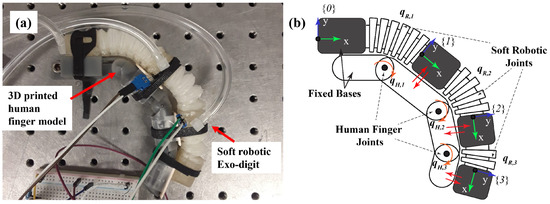
Figure 1
Open AccessArticle
Hand-Eye Calibration via Linear and Nonlinear Regressions
by
Junya Sato
Automation 2023, 4(2), 151-163; https://doi.org/10.3390/automation4020010 - 08 May 2023
Abstract
►▼
Show Figures
For a robot to pick up an object viewed by a camera, the object’s position in the image coordinate system must be converted to the robot coordinate system. Recently, a neural network-based method was proposed to achieve this task. This methodology can accurately
[...] Read more.
For a robot to pick up an object viewed by a camera, the object’s position in the image coordinate system must be converted to the robot coordinate system. Recently, a neural network-based method was proposed to achieve this task. This methodology can accurately convert the object’s position despite errors and disturbances that arise in a real-world environment, such as the deflection of a robot arm triggered by changes in the robot’s posture. However, this method has some drawbacks, such as the need for significant effort in model selection, hyperparameter tuning, and lack of stability and interpretability in the learning results. To address these issues, a method involving linear and nonlinear regressions is proposed. First, linear regression is employed to convert the object’s position from the image coordinate system to the robot base coordinate system. Next, B-splines-based nonlinear regression is applied to address the errors and disturbances that occur in a real-world environment. Since this approach is more stable and has better calibration performance with interpretability as opposed to the recent method, it is more practical. In the experiment, calibration results were incorporated into a robot, and its performance was evaluated quantitatively. The proposed method achieved a mean position error of 0.5 mm, while the neural network-based method achieved an error of 1.1 mm.
Full article
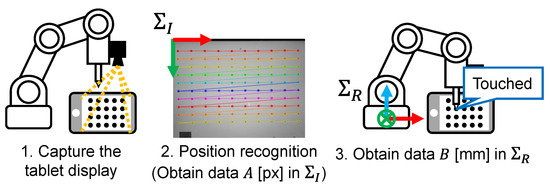
Figure 1
Open AccessArticle
Optimization of 3D Tolerance Design Based on Cost–Quality–Sensitivity Analysis to the Deviation Domain
by
Kaili Yang, Yi Gan, Yanlong Cao, Jiangxin Yang and Zijian Wu
Automation 2023, 4(2), 123-150; https://doi.org/10.3390/automation4020009 - 21 Apr 2023
Cited by 1
Abstract
Under the new geometric product specification (GPS), a two-dimensional chain cannot completely guarantee quality of the product. To optimize the allocation of three-dimensional tolerances in the conceptual design stage, the geometric variations of the tolerance zone to the deviation domain will be mapped
[...] Read more.
Under the new geometric product specification (GPS), a two-dimensional chain cannot completely guarantee quality of the product. To optimize the allocation of three-dimensional tolerances in the conceptual design stage, the geometric variations of the tolerance zone to the deviation domain will be mapped in this paper. The deviation-processing cost, deviation-quality loss cost, and deviation-sensitivity cost function relationships combined with the tolerance zone described by the small displacement torsor theory are discussed. Then, synchronous constraint of the function structure and tolerance is realized. Finally, an improved bat algorithm is used to solve the established three-dimensional tolerance mathematical model. A case study in the optimization of three-part tolerance design is used to illustrate the proposed model and algorithms. The performance and advantage of the proposed method are discussed in the end.
Full article
(This article belongs to the Topic Smart Manufacturing and Industry 5.0)
►▼
Show Figures
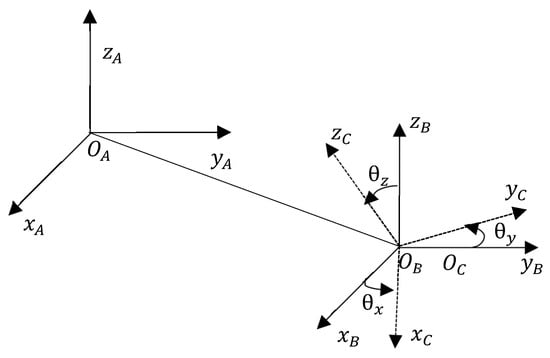
Figure 1
Highly Accessed Articles
Latest Books
E-Mail Alert
News
Topics
Topic in
Automation, Buildings, Digital, Energies, Sensors, Smart Cities, Sustainability
Digital Innovation for Realizing the Goals of Construction 5.0
Topic Editors: Miroslaw J. Skibniewski, Hui Liu, Yu Lei, Chunlu LiuDeadline: 31 May 2024
Topic in
Automation, Energies, IJERPH, Safety, Vehicles
Vehicle Safety and Automated Driving
Topic Editors: Xianke Lin, Chao ShenDeadline: 31 July 2024
Topic in
Automation, Electronics, Eng, Hardware, Micromachines, Signals
New Development for Circuit Design: Synthesis, Modeling, Simulation, and Applications
Topic Editors: Nestor Evmorfopoulos, Alkiviadis Hatzopoulos, George I. StamoulisDeadline: 5 October 2024
Topic in
Automation, Electronics, Energies, Machines, Symmetry
Predictive Analytics and Fault Diagnosis of Machines with Machine Learning Techniques
Topic Editors: Wentao Mao, Jie LiuDeadline: 31 October 2024

Conferences
Special Issues
Special Issue in
Automation
Model Predictive Control: Advances in Sensor Technologies and Applications
Guest Editor: Simon TomažičDeadline: 31 May 2024
Special Issue in
Automation
Smart Remanufacturing
Guest Editors: Zude Zhou, Quan Liu, Wenjun Xu, F. Javier Ramírez, Marcello Fera, Mario Caterino, Duc Truong PhamDeadline: 31 July 2024
Topical Collections
Topical Collection in
Automation
Automation in Intelligent Transportation Systems
Collection Editor: Chen Lyu


